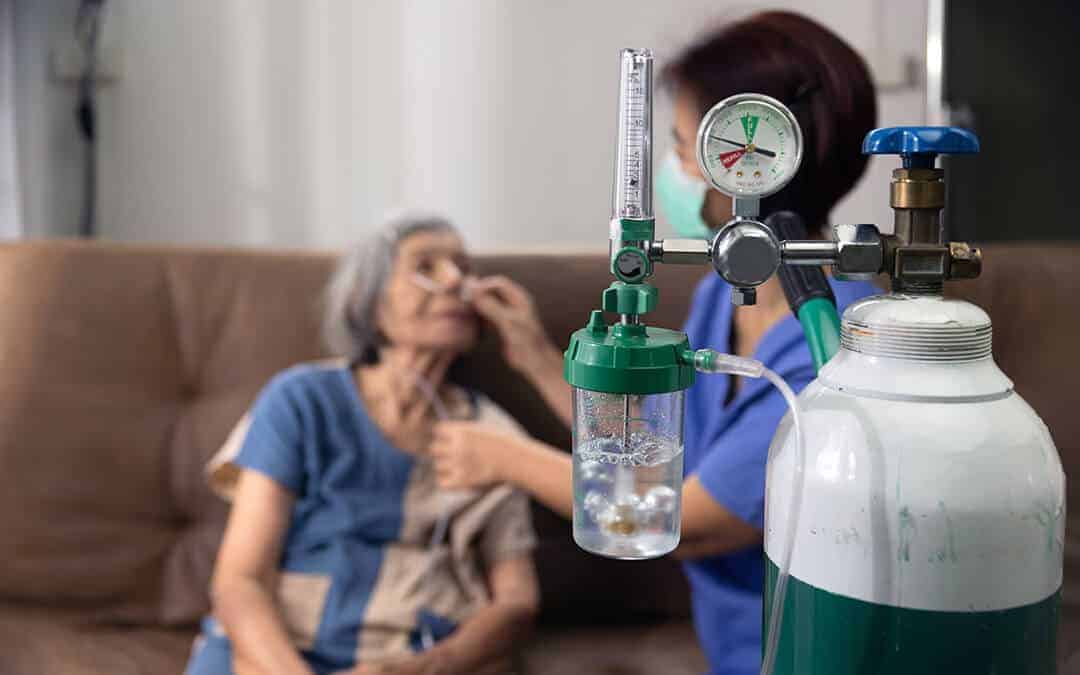Pure oxygen plays a crucial role across numerous sectors, notably in both healthcare and industrial fields. It supports life-saving medical treatments and boosts manufacturing efficiency. Leveraging nexAir’s expertise in oxygen supply systems, organizations can ensure stability and performance in their oxygen delivery capabilities.
Medical Oxygen Applications
In healthcare, medical-grade oxygen profoundly impacts patient care. It serves as a lifeline in emergency situations and is pivotal for managing chronic respiratory conditions. According to the Cleveland Clinic, supplemental oxygen therapy aids individuals with conditions like COPD, COVID-19, and sleep apnea to maintain adequate oxygen levels in their bloodstreams.
Enhancing Health Outcomes
Medical oxygen not only supports organ function improvement but is also a primary treatment for critically ill patients. The National Institutes of Health underscores its necessity in treating acute hypoxic respiratory failure, ensuring that patients receive the oxygen delivery needed for cellular functions.
Supply and Technology
Modern oxygen delivery systems in hospitals incorporate advanced technologies. These systems, as highlighted by the World Health Organization, are essential in maintaining the health continuum by preventing interruptions in oxygen supply, particularly for respiratory illnesses treatment.
Industrial Applications and Benefits
Industrial uses for oxygen differ significantly from medical applications. Industries such as metal fabrication and chemical processing require substantial oxygen volumes and precise system control. Oxygen Administration guidelines emphasize the importance of engineered oxygen delivery systems for enhancing production efficiency and ensuring worker safety.
System Design and Implementation
Proper oxygen system design is critical for safety, efficiency, and reliability. Implementations draw from a rigorous evaluation of needs, addressing everything from safety measures to future growth. With these designs, UCSF Health highlights the intricate balance needed to manage both medical and industrial oxygen applications effectively.
Quality Control and Monitoring
Oxygen systems rely heavily on quality control to maintain purity. American Lung Association reflects on the value of continuous monitoring and validation, which is vital for both patient care and industrial utility.
Expert Support and Maintenance
Ongoing support is crucial for the longevity and efficiency of oxygen systems. Regular maintenance and expert support ensure adherence to compliance and optimal performance.
Frequently Asked Questions
What is supplemental oxygen therapy?
Supplemental oxygen therapy involves using medical oxygen to support patients who can’t maintain adequate oxygen levels by themselves. It is crucial in treating respiratory failure and improving quality of life for individuals with chronic lung conditions.
How is oxygen used in industrial applications?
In industrial settings, oxygen is used to improve efficiency in processes such as metal fabrication and chemical production. It supports high-precision operations thanks to its controlled and scalable supply.
Why is continuous monitoring important for oxygen systems?
Continuous monitoring ensures that oxygen systems maintain high purity levels and operational efficiency. It helps prevent disruptions in the supply chain, vital for both medical and industrial uses.
Conclusion
Oxygen’s role in both healthcare and industrial environments is unparalleled. By employing sophisticated oxygen delivery and monitoring systems, facilities can secure reliable and efficient oxygen utilization. nexAir’s comprehensive solutions are tailored to meet diverse needs, ensur



